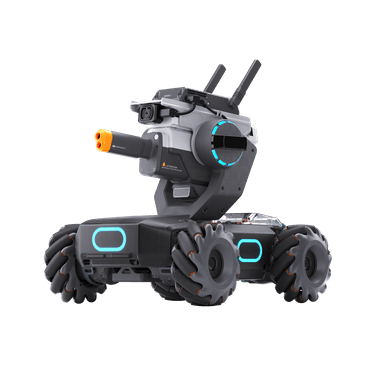
How to program the DJI Robomaster for competitions?
Competing in robotics competitions can be a thrilling and challenging experience. To excel in these events, it is crucial to have a well-programmed robot that can perform efficiently and autonomously. The DJI Robomaster is a popular choice among robotics enthusiasts for competitions due to its advanced features and capabilities. In this article, we will discuss how to program the DJI Robomaster effectively for competitions.
Understanding the DJI Robomaster
Before diving into programming, it is essential to have a good understanding of the DJI Robomaster’s components and capabilities. The Robomaster is equipped with a variety of sensors, motors, and a powerful processor that enables it to move, detect obstacles, and interact with its environment.
Choosing the Right Programming Platform
When it comes to programming the DJI Robomaster, there are several platforms and languages you can choose from. The most popular choices include Python, C++, and Scratch. Each has its own advantages and disadvantages, so it’s important to choose the one that best suits your needs and programming experience.
Setting Up Your Development Environment
Once you have chosen a programming platform, the next step is to set up your development environment. This includes installing the necessary software and libraries on your computer, connecting to the Robomaster, and configuring your IDE for programming.
Understanding the Robomaster SDK
The DJI Robomaster comes with a Software Development Kit (SDK) that allows you to access its various features and functionalities programmatically. The SDK provides APIs for controlling the motors, reading sensor data, and communicating with other devices. Understanding how to use the SDK effectively is essential for programming the Robomaster for competitions.
Creating Autonomous Behaviors
One of the key aspects of programming the DJI Robomaster for competitions is creating autonomous behaviors that allow the robot to navigate its environment and complete tasks without human intervention. This involves writing algorithms that enable the robot to detect obstacles, make decisions, and execute actions based on sensor data.
Testing and Iterating
After you have programmed the DJI Robomaster with your desired behaviors, it is important to test its performance in a simulated or real-world environment. This will help you identify any issues or bugs in your code and make necessary adjustments to improve the robot’s performance. Iterating on your code is a crucial part of the programming process and will ultimately lead to a more reliable and efficient robot.
Conclusion
Programming the DJI Robomaster for competitions can be a challenging but rewarding experience. By understanding the robot’s capabilities, choosing the right programming platform, and creating autonomous behaviors, you can effectively program the Robomaster to compete in robotics tournaments. Remember to test and iterate on your code to ensure optimal performance and success in competitions.
Was this helpful?
0 / 0